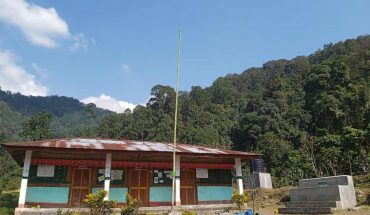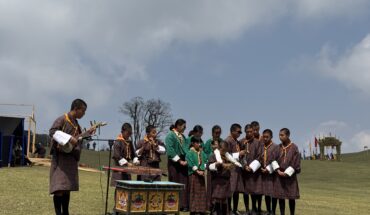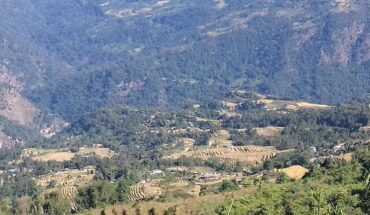
Absence of a nationwide probabilistic risk assessment limits the country’s ability to prioritize investments effectively
PEMA TSHOMO
Thimphu
Bhutan is increasingly focusing on strengthening its disaster risk management (DRM) systems. This initiative is considered crucial due to the country’s vulnerability to natural hazards such as earthquakes, floods, landslides, and glacial lake outbursts (GLOFs).
Nonetheless, while significant progress has been made, several challenges persist in achieving a comprehensive and effective DRM framework.
In recent years, the country has undertaken various sectoral and sub-national risk assessments. Notably, the National Adaptation Plan (NAP) preparation included evaluations of climate risks affecting agriculture, forests, biodiversity, health, and water resources. Hazard mapping and risk assessments for floods, landslides, and earthquakes are ongoing.
However, the absence of a nationwide, probabilistic risk assessment limits the country’s ability to prioritize investments effectively
absence of a nationwide, probabilistic risk assessment limits the country’s ability to prioritize investments effectively. Data fragmentation and inconsistent methodologies further hinder the integration and utilization of risk information.
Experts say the recognition of the need for disaster risk assessments is evident among Bhutanese agencies. Yet, clearly defined roles and responsibilities remain elusive.
The Department of Local Governance and Disaster Management (DLGDM) plans to address this gap by developing Risk Information Guidelines under the Strengthening Risk Information for Resilience Project.
These guidelines aim to delineate agency roles, establish standards for multi-hazard risk assessments, and set protocols for information sharing.
Integration of these guidelines into the forthcoming revision of the Geo-Information Policy and the development of Geo-Information Roles and Responsibilities by the National Land Commission Secretariat (NLCS) under the 13th Five-Year Plan is anticipated.
The Department of Geology and Mines (DGM), under the Ministry of Energy and Natural Resources (MoENR), is tasked with seismic monitoring. DGM also operates 14 earthquake source monitoring stations and 221 earthquake intensity meters nationwide.
The Bhutan crisis preparedness gap analysis technical report revealed that the country lacks an earthquake early warning system (EWS). So, there is a need to overcome these challenges, particularly in southern regions and areas prone to lightning where data disruption and transmission to the central monitoring system is more realistic.
It also included that the landslide risk assessments are limited, and no landslide EWS exists. The DGM conducts landslide hazard mapping while the Department of Surface Transport (DoST) under the Ministry of Infrastructure and Transport (MoIT) has initiated risk assessments along national highways.
However, the absence of an official collaboration mechanism between these departments impedes information sharing. The Technical Working Group for multi-hazard risk assessment, established under the World Bank-financed Strengthening Risk Information for Resilience project, seeks to foster such collaboration.
The National Center for Hydrology and Meteorology (NCHM), designated a ‘Hydromet Hazard Early Warning Service Provider,’ offering qualitative extreme weather advisories and flood and GLOF early warnings.
However, due to limited capacity and resources, it lacks a lightning warning system and does not conduct regional climate research or operational climate forecasting. Seasonal forecasts are based on consensual statements from the South Asian Seasonal Climate Outlook Forums.
Further, the forest fire monitoring and EWS are absent, primarily due to technical and financial constraints. The Department of Forests and Park Services (DoFPS) under the MoENR is mandated to prevent and protect forests from fire, including early detection provisions.
Despite partnerships, such as with the International Centre for Integrated Mountain Development (ICIMOD) for a forest fire monitoring system, effectiveness is compromised by technical issues and reliance on external servers.
Establishing a robust, research-based forest fire monitoring system leveraging remote sensing and advanced technologies therefore remain imperative.
Meanwhile, the Royal Centre for Disease Control (RCDC) under the Ministry of Health (MoH) monitors and reports on disease spread through the National Early Warning Alert and Response Surveillance System, a web-based platform enabling real-time reporting.
However, capacity constraints necessitate sending samples abroad for certain diagnostics. Despite the existence of the Veterinary Information System, zoonotic disease surveillance is hindered by a lack of systematic reporting.
During the COVID-19 pandemic, Bhutan implemented screening processes at entry points. Districts along the southern border face high risks from vector-borne diseases, underscoring the need for formalized cross-border information-sharing mechanisms with neighboring countries like India. Enhanced collaboration is essential for effective preventive measures.
While the MoH regularly collects data on malnutrition, the country lacks a food security EWS. The National Disaster Management and Contingency Plan mandates the Department of Agriculture (DoA) under the Ministry of Agriculture and Livestock (MoAL) to develop systematic baseline and pre-crisis food security information, but these systems are not yet established.
Studies reveal that comprehensive risk communication is limited due to scarce reliable risk assessments and a lack of targeted messaging. Warnings are often more scientific than actionable for the public and are primarily disseminated through television in Dzongkha and English, limiting reach in rural areas where local dialects prevail. The absence of a consolidated national risk communication system further hampers public awareness.
To address these challenges, Bhutan is implementing the Strengthening Risk Information for Disaster Resilience project, supported by the World Bank.
This initiative aims to enhance the Royal Government of Bhutan’s capacity in developing and using multi-hazard risk information for development planning in targeted sectors.
Key components include the development of a Multi-Hazard Risk Decision Support System (DSS) and a nationwide multi-hazard risk assessment focused on earthquakes, floods, and landslides along highways.
The DSS is expected to improve coordination and data exchange among agencies, facilitating risk-informed decision-making. Moreover, the World Bank has provided financing to strengthen Bhutan’s early warning systems for natural hazards, including GLOFs and wildfires.
This support aims to enhance the country’s financial system resilience and the accuracy of disaster risk insurance through the adoption of international property valuation standards. The financing also includes a Climate Resilient Debt Clause.





